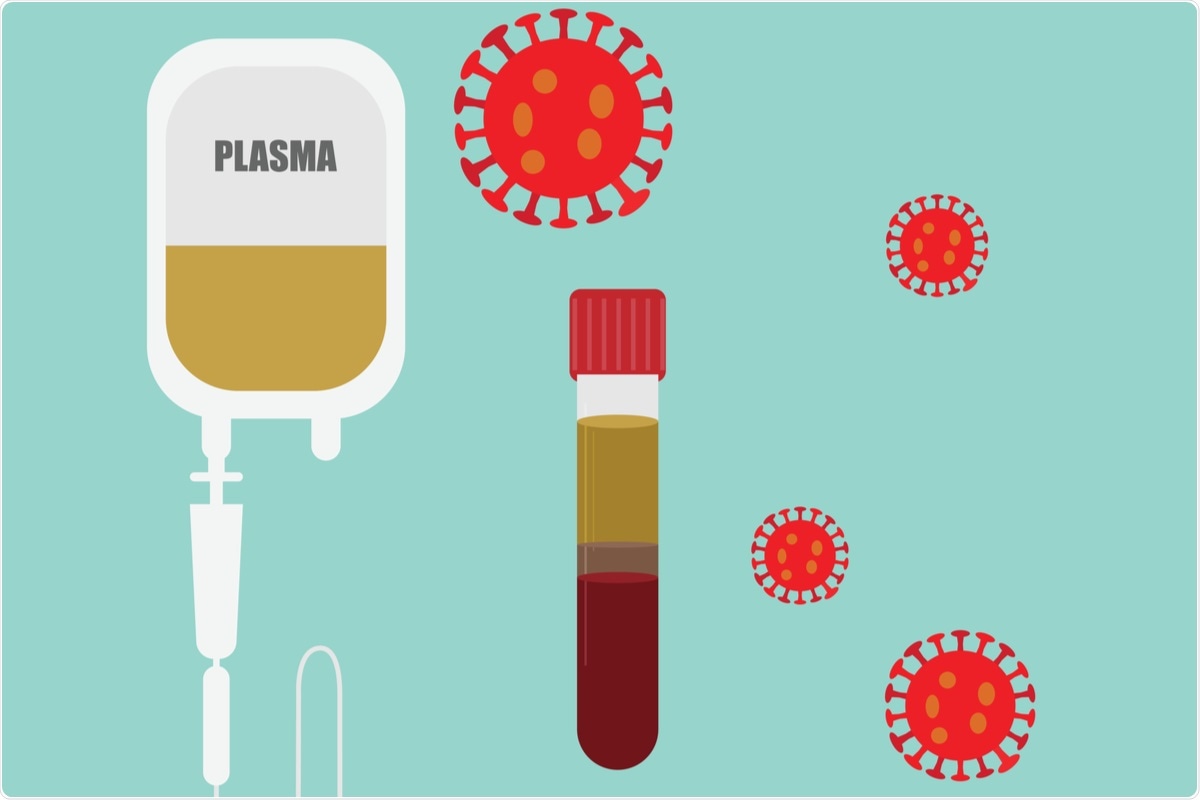In a recent study posted to the medRxiv* preprint server, researchers conduct a quasi-experimental multi-center analytical study involving hospitalized coronavirus disease 2019 (COVID-19) patients to gather information on the rationale use of convalescent plasma. Herein, the researchers estimate the safety and effectiveness of convalescent plasma therapy (CPT) in ameliorating the clinical course of severe acute respiratory syndrome coronavirus 2 (SARS-CoV-2) infection in hospitalized COVID-19 patients.
 Study: Use of Convalescent Plasma Therapy with Best Available Treatment (BAT) among Hospitalized COVID-19 Patients: A Multi-Center Study. Image Credit: Teeradej / Shutterstock.com
Study: Use of Convalescent Plasma Therapy with Best Available Treatment (BAT) among Hospitalized COVID-19 Patients: A Multi-Center Study. Image Credit: Teeradej / Shutterstock.com
In the treatment of COVID-19, no single best therapy has been identified yet. CPT involved the administration of passive antibodies against a given antigen to susceptible patients for the prevention and treatment of disease caused by that antigen.
To date, CPT is not included in the standard treatment protocol for the treatment of COVID-19 and is still considered an experimental therapy. As a result, the current study was designed to assess and compare the effect of CPT on laboratory and clinical parameters, length of hospital stay, mortality, and adverse reactions with the historical control group without CPT treatment.
About the study
The current study included 65 patients aged 18 years old or older, who were admitted to the University of Santo Tomas hospital between April 2020 to October 2020. All study participants were diagnosed with COVID-19 and received CPT.
Another group of 65 COVID-19 patients who were admitted between October 2020 to March 2021 at Makati Medical Centre but received only the best available treatment (BAT) served as the matched control group.
The researchers assessed different laboratory parameters including mean values of complete blood count (CBC), serum ferritin, D-dimer, lactate dehydrogenase (LDH), and arterial blood gas before and at 24 hours three or five days post-transfusion of the CPT. The data of patients who were administered with CPT were matched based on age, gender, and severity of COVID-19 pneumonia with patients who received BAT alone.
Study findings
The median age of the population who received CPT was 60 years, with 68% males and 47% of patients developing severe pneumonia. The patients had baseline median level of hemoglobin, white blood cells (WBCs) count, and platelet count of 138g/dl, 7.54 x 109/L, and 2, 39, 500 x 109/L, respectively.
The researchers observed a significant decrease in mean hemoglobin counts and an increase in WBC and platelet counts pre-treatment and post-treatment with CPT as compared to the baseline values.
The mean values of different inflammatory markers like lactate dehydrogenase (LDH) (517.46 U/L), D-dimer (4.15 mcg/ml), and ferritin (3358.09 mcg/L) were elevated pre-treatment. However, post-treatment with CPT, mean LDH and ferritin levels were reduced to 458.95 U/L and 3287.95 mcg/L, respectively. Baseline partial pressure of oxygen (PaO2) (125.61 mmHg) and PaO2/FiO2 ratio (PFR) (219.01) were significantly improved by CPT treatment.
Upon comparison of the patients administered CPT and BAT alone, there was a significant difference in the length of hospital stay. In severe and critically ill patients, the length of stay was significantly longer in the CPT treatment group (median 15 and 16 days, respectively) as compared to the BAT group (median 10.5 and 12 days, respectively).
Interestingly, in patients who received BAT, there was a higher percentage of survival as compared to those in the CPT group at 78.46% and 72.31%, respectively. However, this difference was not significant, which was likely due to the better presentation of illness to the BAT group.
During CPT treatment, no serious adverse events were observed in this study, except for one patient who developed a mild hypersensitivity reaction.
Conclusions
The findings of the current study demonstrated that no significant effect was observed on the COVID-19 recovery rate and outcome in patients who received CPT as compared to the patients who did not receive CPT. CPT administration was observed to be safe among all COVID-19 patients, regardless of the severity level and clinical profile.
However, the current study has limitations, which included a lack of consideration of viral neutralization of immunoglobulins from convalescent plasma. Additionally, there was not an assessment of the CPT effect on the mean respiratory rate oxygenation (ROX) index and imaging due to the erratic availability of these tests/values in the sample population.
Moreover, the assessment for the day of illness to the CPT administration day and the measurement of antibody titers need to be further examined, along with factors affecting the length of stay like hospital-acquired infection and comorbidities.
*Important notice
medRxiv publishes preliminary scientific reports that are not peer-reviewed and, therefore, should not be regarded as conclusive, guide clinical practice/health-related behavior, or treated as established information.